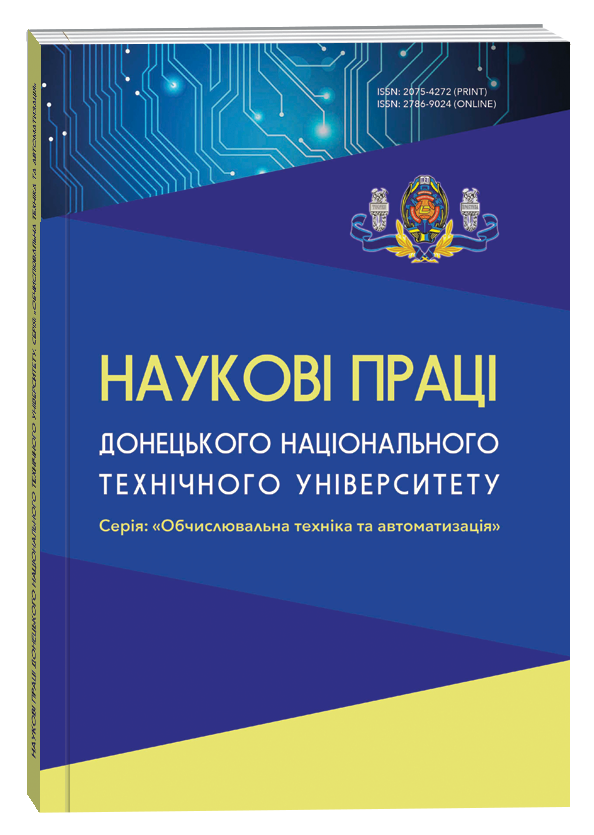COMPARATIVE ANALYSIS OF METHODS AND TECHNOLOGIES FOR PENETRATION TESTING MODELING
DOI:
https://doi.org/10.32782/2786-9024/v3i5(37).344522Keywords:
pentesting, vulnerability modeling, comparative analysis, artificial intelligence, cybersecurity, Metasploit Framework, OWASP, machine learning, virtualization, ethical hacking, TensorFlow, Scapy, cloud systems, IoT devices.Abstract
The article conducts a detailed comparative analysis of contemporary methods and technologies for modeling penetration testing (pentesting), a fundamental aspect of ensuring cybersecurity in the digital world. The authors trace the evolution of these approaches: from classical manual techniques that require high expertise from specialists to innovative automated systems integrating artificial intelligence (AI) and machine learning (ML). Specifically, various vulnerability simulation models are compared, such as the popular Metasploit Framework for exploit emulation, virtualized environments based on VirtualBox, VMware, or containerization with Docker, which enable the creation of isolated test networks for simulating real attacks. Special attention is given to hybrid technologies that combine traditional tools with AI algorithms for attack prediction and automation, for example, using libraries like TensorFlow, PyTorch, or Scapy packages for generating network traffic. The analysis is performed based on key efficiency criteria: accuracy in vulnerability detection (considering false positives and false negatives), test execution speed, scalability for large systems, computational resource costs, error rates, and ease of integration. The advantages of each method are discussed–for instance, manual methods provide deep contextual understanding, while AI approaches enable real-time processing of large data volumes–and their disadvantages, such as vulnerability to evolving threats or the need for continuous model training. Particular emphasis is placed on adapting these technologies to modern scenarios, including cloud platforms (AWS, Microsoft Azure, Google Cloud), Internet of Things (IoT devices with limited resources), and mobile applications. The research is grounded in empirical data from tests on standardized models, such as OWASP Top 10 for web vulnerabilities and NIST Cybersecurity Framework, where it is shown that hybrid methods increase overall efficiency by 30-50% compared to traditional ones, reducing vulnerability detection time and minimizing risks. The authors offer practical recommendations for selecting optimal technologies for different types of organizations–from small businesses to large corporations–considering ethical aspects (e.g., adherence to ethical hacking principles), regulatory requirements (GDPR for data protection, ISO 27001 for information security management), and potential risks, such as unauthorized tool usage. The article serves as a valuable resource for cybersecurity professionals, software developers, IT project managers, and researchers, contributing to the development of more resilient strategies for protection against cyber threats in a dynamic digital technology environment.
References
Verizon, "2025 Data Breach Investigations Report," Verizon, 2025. [Онлайн]. URL: https://surl.li/qsfajk. Дата звернення: 25.09.2025.
Cybersecurity Ventures, "Cybercrime To Cost The World $10.5 Trillion Annually By 2025," Apr. 2025. [Онлайн]. URL: https://surl.li/ujmskz. Дата звернення: 25.09.2025.
CompTIA, "State of Cybersecurity 2025," 2025. [Онлайн]. URL: https://surl.lu/mjjnfk. Дата звернення: 25.09.2025.
A. Angner et al., "AI Creates New Cyber Risks. It Can Help Resolve Them, Too," Boston Consulting Group, Jul. 2025. [Онлайн]. URL: https://surl.li/jybvzv. Дата звернення: 25.09.2025.
M. Khalil, "Penetration Testing Methodology 2025: Complete Guide," DeepStrike, Aug. 2025. [Онлайн]. URL: https://surl.li/lossfh. Дата звернення: 25.09.2025.
V. Kravchuk, N. Maslova, and I. Dorohyi, “AUTOMATED XSS VULNERABILITY DETECTION IN WEB APPLICATIONS BASED ON A MULTI-AGENT APPROACH”, SP DonNTU. OTA, vol. 3, no. 4 (36), pp. 13–26, May 2025.
"Simulating Penetration Testing Using a Modeling Framework," Assurant Cyber, Aug. 2023. [Онлайн]. URL: https://surl.li/hqgzow. Дата звернення: 25.09.2025.
"Vulnerability Assessment vs Penetration Testing 2025," DeepStrike, May 2025. [Онлайн]. URL: https://surl.li/ fjiytg. Дата звернення: 25.09.2025.
X. Wang et al., "A Unified Modeling Framework for Automated Penetration Testing," arXiv, Feb. 2025. [Онлайн]. URL: https://surl.li/fixacj. Дата звернення: 25.09.2025.
"Simulation in Cybersecurity: Understanding Techniques, Applications, and Goals," ResearchGate, Aug. 2025. [Онлайн]. URL: https://surl.li/pddbjh. Дата звернення: 25.09.2025.
"Breach and Attack Simulation vs. Penetration Testing," Picus Security, May 2025. [Онлайн]. URL: https://surl.li/ lflczz. Дата звернення: 25.09.2025.
"Comparative analysis of penetration testing approaches for IoT devices," ResearchGate, Jun. 2024. [Онлайн]. URL: https://surl.li/hnpome. Дата звернення: 25.09.2025.
A Comparative Study of Penetration Testing Methodologies and Tool Utilization in Cybersecurity, ResearchGate, Aug. 2025. [Онлайн]. URL: https://surl.li/zyinek. Дата звернення: 25.09.2025.
Penetration Testing in 2025: Methods, Technologies & Practices, CyCognito. [Онлайн]. URL: https://surl.li/ jqugpc. Дата звернення: 25.09.2025.
Penetration Testing ROI: Executive Guide 2025, Redbot Security. [Онлайн]. URL: https://surl.li/ugqzas. Дата звернення: 25.09.2025.
"A Comparative Study of Penetration Testing Methodologies and Tool Utilization in Cybersecurity," ResearchGate, Aug. 2025. [Онлайн]. URL: https://surl.li/ oammic. Дата звернення: 25.09.2025.
"Pentesting Statistics 2025: Key Insights and Emerging Trends," ZeroThreat, Jul. 2025. [Онлайн]. URL: https:// surl.lt/tlejih. Дата звернення: 25.09.2025.
"10 Cyber Security Trends For 2025," SentinelOne, Aug. 2025. [Онлайн]. URL: https://surl.li/yclkhx. Дата звернення: 25.09.2025.
Downloads
Published
How to Cite
Issue
Section
License

This work is licensed under a Creative Commons Attribution-NonCommercial-NoDerivatives 4.0 International License.





